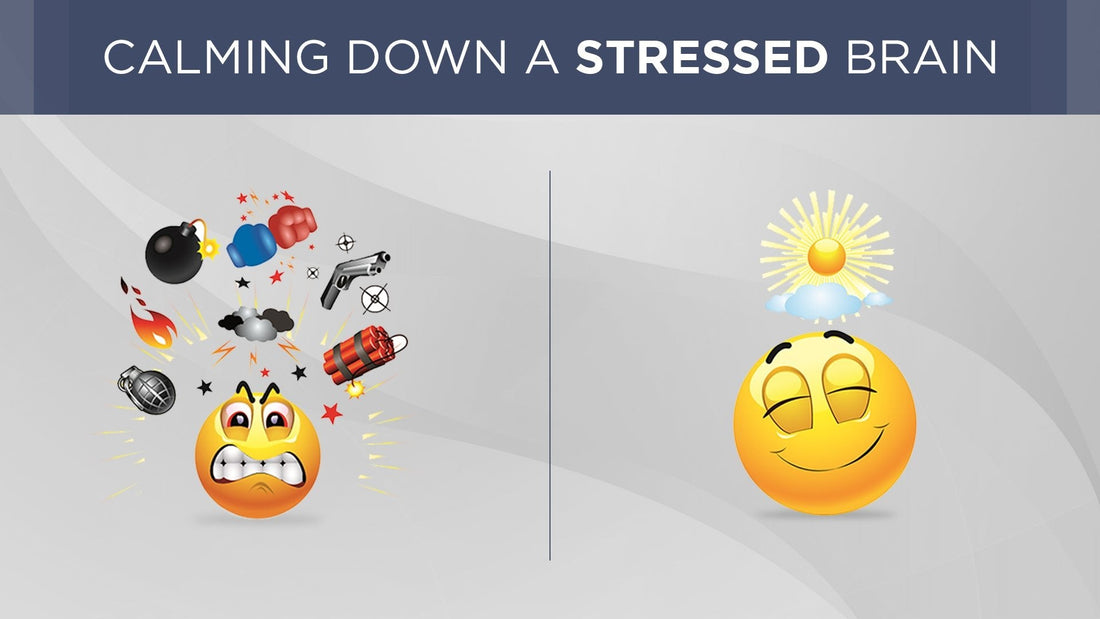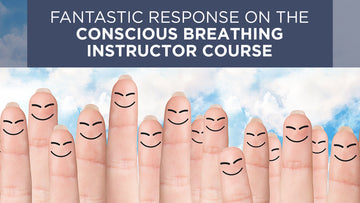
Calming down a stressed brain
To reduce your stress, you can do many things - like improving your posture when sitting, standing or moving, accepting what's happening and not basing your life on things that change (like the weather), lowering the demands on yourself, drinking water, eating natural food, laughing, loving, enjoying physical activity, etc. etc. Another very effective way to reduce your stress is to improve your breathing habits.
Imagine life as a tennis match. Sometimes you are close to the net and on other occasions, you find yourself far down in one corner. Sometimes you hit the ball on the volley, sometimes on the rise; sometimes you have plenty of time while at other times you are under time pressure.
Sometimes the ball goes over, sometimes it goes into the net, and sometimes you miss the ball altogether. It's just like that in life. Sometimes it goes up and sometimes it goes down.
A good tennis player knows that the most important thing after a hit is to strive to return to the starting position at the baseline to be optimally prepared to meet a new ball
Our breathing takes us back to the baseline
When you experience stress or don’t feel well, it indicates that your body is imbalanced, either emotionally, physically or mentally. You are thus outside the baseline.
If you haven’t slept at night or haven’t eaten for a long time, the stress consists of sleep deprivation and hunger, and you naturally resolve it by sleeping and eating.
By taking control of your breathing and making it relaxed, you can make your whole body follow, becoming more relaxed and therefore able to function better. As you improve your breathing, your stress experience decreases and you become more and more relaxed.
With the help of breathing, you can find home again when you’re lost, and return to your baseline.
Exhalation is connected to relaxation

Exhalation is linked to relaxation and by prolonging exhalation, your body's ability to relax and unwind increases. An extended exhalation also has a positive effect on inhalation, as the air reaches lower into the lungs.
Breathing in is an active movement where the breathing muscles work to widen the chest in order to allow air to enter. Upon inhalation, the heart beats faster (the pulse rises) and the sympathetic part of the nervous system (accelerator pedal) is activated.
Exhalation at rest is usually a passive action where no muscles are used and the parasympathetic, calming part of the nervous system (brake pedal) is more active. The heart rests and recovers and the pulse drops.
When your body is more relaxed, you work better and can accomplish more with less effort.
The seven habits that characterize a good breathing
The seven habits that characterize good breathing may be simple, but the challenge is to take more and more of the 1,000 breaths we breathe every hour in this way.
Good breathing begins in the nose. Here, the inhaled air is prepared for the lungs as it is heated and moisturized and cleansed from bacteria and other particles in the air.
Furthermore, breathing is low and wide, so that the air ends up in the lower parts of the lungs when breathing in. The lower part of the lungs contain the most alveoli and blood, so low breathing allows the oxygen you inhale to be transferred to the blood more easily.
Good breathing at rest is also slow and rhythmic, while the breath is small.
Finally, your breathing is quiet. Snuffling, clearing your throat, sighing, or snoring are all forms of breathing. These types of breathing are very ineffective and cause unnecessary stress to your body.

Open up the window of opportunity to react differently
When you experience incoming stimuli as stressful, the sympathetic part of your nervous system is activated. Living life at a fast tempo with meetings, deadlines, bills and many "have tos" gives rise to a multitude of thoughts and feelings that cause a faster, shallower and more irregular breathing.
By taking control of your breathing and breathing consciously, you can influence your nervous system in a more parasympathetic direction. This reduces your pulse, improves your digestion and relaxes muscles in your blood vessels and respiratory tract. You simply open up the window of opportunity to react differently to what's happening.
Over time, you teach your body to handle incoming stimuli in a calmer way. New habits are established and your cell memories (instincts, life experiences, values, etc.) are updated. It can be compared to open up a saved document on your computer, change it and save the new updated information on the hard drive.

The Breathing Anchor makes you calm and present in the moment
Most situations in life can be handled by first evaluating the situation and then responding in a conscious, creative and intelligent manner. With proper breathing technique, you can calm down your nervous system long enough so intelligence and creativity can begin to influence how you deal with the challenges of everyday life.
In this state, it’s natural to cooperate and to be happy and loving towards both yourself and others. Here, there is a big room for learning and development.

One way of becoming calmer and more present is by using the breathing anchor. Imagine a breathing anchor that drops lower and lower into your body for every prolonged exhale, and eventually anchors you.
The focus is on the exhale. Try to make it 50-200% longer than the inhale, for example a count of 2 to 3 on the inhale and a count of 3 to 8 on the exhale. Don't push it too hard as the overall goal is to make you relaxed and pushing it too much will increase tension.
The breathing anchor can be applied anytime, anywhere, preferably in situations where you are usually stressed, for example before eating, before an important meeting, in a traffic jam, in long lines, or when you’re about to lose your patience or get angry.
Conscious Breathing Retraining
Breathing in a good way in everyday life is not always the easiest, but you have every opportunity to improve it with some exercise. By improving your breathing, chances are that not only will your stress decrease, but also your health, sleep, and energy levels will be improved.
In addition to using the breathing anchor, you can:

Become more aware of how you are breathing. Become more aware of your breathing habits in different situations in your everyday life. Awareness is often the first step to change. How do you breathe when you talk? When you listen? Before you get angry? When you feel stressed? When you concentrate?
Exercise with the Relaxator Breathing Retrainer. The Relaxator provides a resistance on the outbreath that trains your breathing muscles. It also helps you maintain rhythmic, slow, low and small breathing while at the same time air circulation increases in the lungs and nose/sinuses.
Tape your mouth at night. Taping your mouth at night ensures that your mouth is kept closed and that you only breathe through your nose. Many people experience a deeper sleep and feel more rested when they wake up.

Do physical activity with your mouth closed. Having your mouth shut during exercise can be a challenge, but with reduced intensity and a little patience, it usually goes well. Many people experience increased stamina, faster recovery, and less soreness.
One way to help you get started with improving your breathing habits is our 28-Day Conscious Breathing Retraining Program. Read more here >>.
My own internal stress has been significantly reduced
For my part, from being a world champion in stressing, and holding a black belt in stress, all categories, through the conscious breath, I've found one of the most powerful and most effective tools available to help me unlock the turbo and wind down.
My continuously recurring, meaningless thoughts that have gone back and forth with the speed of lightning, like an endless mental ping-pong game, have been replaced by increased joy and harmony and presense in the here and now.
I feel great joy having found the on and off switch so that I can decide when it's time to turn on the turbo, or when to go at a calmer pace.
Many have experienced the same. Tens of thousands of people around the world are thanking Conscious Breathing for a better quality of life, more energy, and increased harmony. Perhaps it can also help you to wind down, make a little wiser decisions in your daily life and inspire you to DARE to follow your inner voice and gut feeling more and more often.







